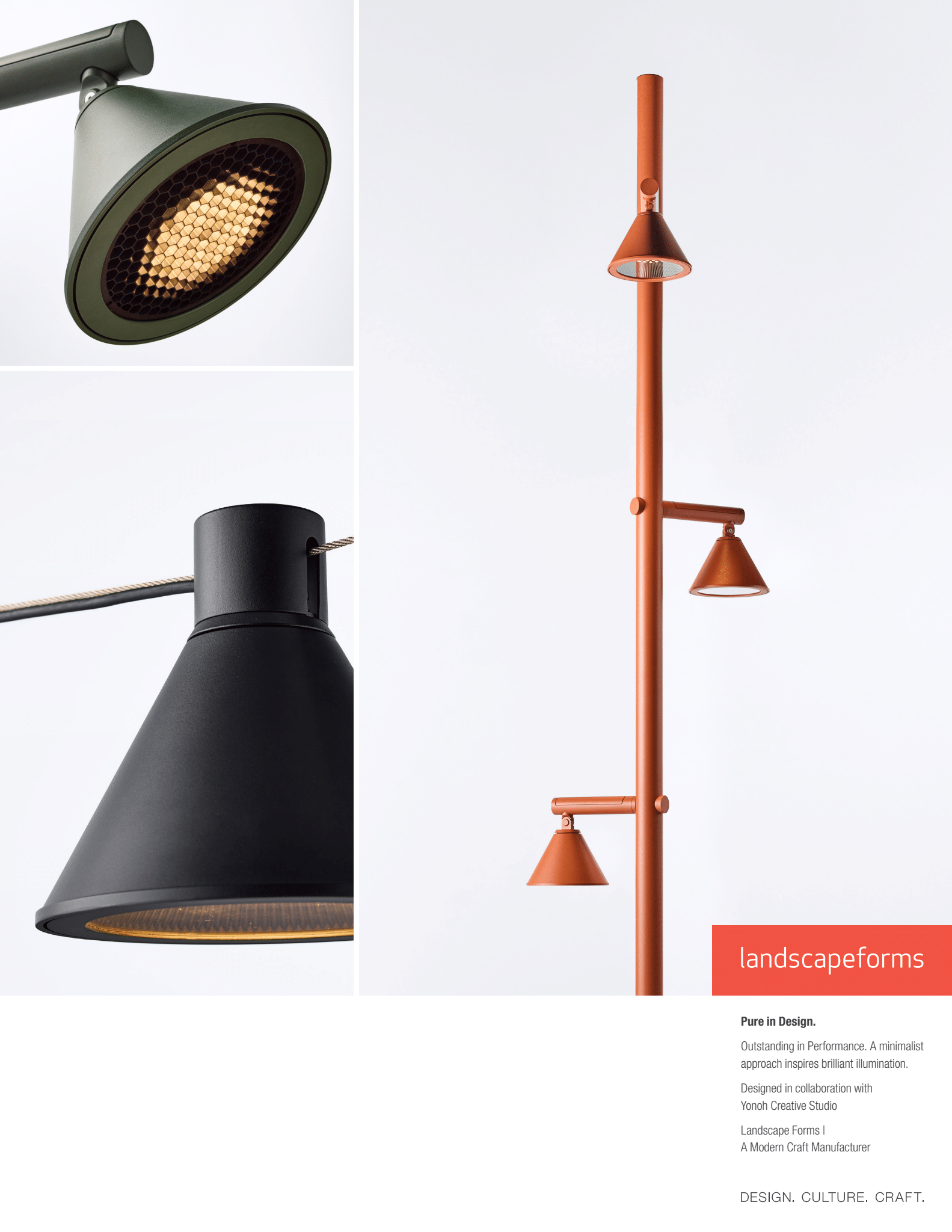
6 minute read
Gardens in a New Light: Longwood’s Redesign Marries Beauty and Innovation
By Randy Reid
Nestled near Philadelphia, just a short distance from the Delaware border, Longwood Gardens has long been admired for its spectacular horticultural displays. With elaborate seasonal showcases—like dazzling Fourth of July fountain shows, festive Mother’s Day events, and breathtaking Christmas displays—the garden is a visual spectacle all year long.
“On holidays the whole place transforms— it’s magical,” said Gabriela Grullon, Senior Associate at Tillotson Design Associates. The garden is well worth the two-hour train ride and short cab trip from the city.
In October 2024, Longwood unveiled a major lighting transformation, six years in the making, that seamlessly merges its historic elegance with modern lighting technology. The design was led by architects Weiss/Manfredi and landscape architects Reed Hilderbrand, with Tillotson Design Associates responsible for the lighting design. The project began in 2018, with a particular emphasis on the expansive West Conservatory, which Gabriela described as “the central piece for this new redesign.”

The goal of the West Conservatory lighting design was to support Longwood’s seasonal changes, as the plantings shift dramatically four times a year. “We wanted to make sure they had the flexibility to really punch up certain colors as the seasons changed,” Gabriela said.

The TDA team, led by Suzan Tillotson, Project Manager Gabriela Grullon, and designers Trinetra Manickavasagam and Zoe Grosshandler, used track lighting from Litelab paired with Lutron Ketra bulbs, allowing garden staff to fine-tune color temperatures, vibrancies, and intensities throughout the year.

The lighting design scope was broad. Tillotson Design worked not only on the conservatory and site master plan, but also on a standalone administrative building atop the Grove. Within the conservatory, they lit the restaurant, lobby, and a multipurpose room. However, the West Conservatory remained the visual and design focal point.
"We had just these three main lines of track lighting at the start," Gabriela noted. These were mounted overhead to create layered illumination. Formal pathways lined with uplit trees led visitors into the central space, anchoring the guest experience.

The conservatory itself was designed as a series of garden islands, each featuring unique planting themes. The center island, initially planned to feature olive trees, evolved into a grove of palm trees that Gabriela called “really beautiful.” Another island includes a peaceful path flanked by ornamental trees. Lighting treatments emphasized these distinctions, creating moments of visual pause and harmony.
One of the most compelling lighting moments came from the dramatic uplighting of sculptural columns. Many different luminaires were considered for the project, the final solution involved custom products from Designplan Lighting.
"We did numerous mockups to determine the right balance between optics, glare control, output and form factor that would allow us to seamlessly integrate the fixture in an enclosure at the base of each column,” Gabriela recalled. "It felt like every single fixture had to be tested in context. But that’s what made the final result so successful—seeing it live and making decisions on the spot."

This hands-on approach extended to every part of the garden. The team gave special attention to the interaction between light and water. The Mediterranean Garden, for instance, includes reflective canals where light was deliberately positioned to complement—not overpower— natural reflections. "We carefully deliberated on whether to illuminate the water directly or emphasize its reflective qualities,” Gabriela noted.
Auroralight uplights were integrated to highlight lush vines climbing the conservatory walls, creating visual depth and movement. In parallel, decorative pendants fabricated by ILEX were positioned to harmonize with the building's structure and character.
Pathway illumination was handled with equal care. Lumenpulse uplights and Auroralight pathway lights were strategically placed for safe navigation and ambiance. In the Bonsai courtyard—located between the conservatory and administration building— Lumenpulse fixtures highlight sculpted hedges, enhancing the garden’s peaceful atmosphere.
Interior areas were approached with warmth and subtlet. Lucifer downlights and Visual Comfort & Co. pendants defined the restaurant and bar areas, providing elegance and usability. “The restaurant space is designed to be intimate yet functional,” said Gabriela, noting the carefully hidden uplights to accentuate architectural forms.
Commissioning the lighting system at Longwood was no small feat for the TDA team. Gabriela recalled they traveled five consecutive weeknights to site, navigating both construction realities and time pressures. “It was a race against the clock,” she said. Because daylight made fixture aiming impractical, the team divided their work—tackling less light-sensitive zones during the day and returning at night for fine-tuning.
Even with pre-issued aiming and zoning diagrams, evolving site conditions introduced new challenges. The design was created using planting diagrams. The actual plants arrived midway through the aiming process, prompting last-minute lighting adjustments. To keep pace, Lutron had to reprogram the entire lighting system multiple times.

The adaptability of the Ketra system became especially evident during the Super Bowl, when the entire conservatory was washed in green light for the Philadelphia Eagles. “It demonstrated that our design provided not just visual appeal but practical adaptability,” Gabriela said.
The lighting system is fully controllable via a secure app and keypad, making seasonal transitions and event-based changes seamless for Longwood staff.
Despite the complexity and labor-intensive nature of the project, Gabriela expressed nothing but pride. “It’s the kind of job that provides value beyond profit,” she shared. “It inspires you and brings a profound sense of accomplishment.”
Ultimately, Longwood Gardens’ lighting transformation stands as a model of how thoughtful lighting can enhance and evolve the identity of a historic site. The Tillotson Design team’s exhaustive attention to detail, commitment to mockups, and use of advanced technology have yielded a stunning, immersive experience—one that celebrates the garden’s past while lighting the way toward its future.












